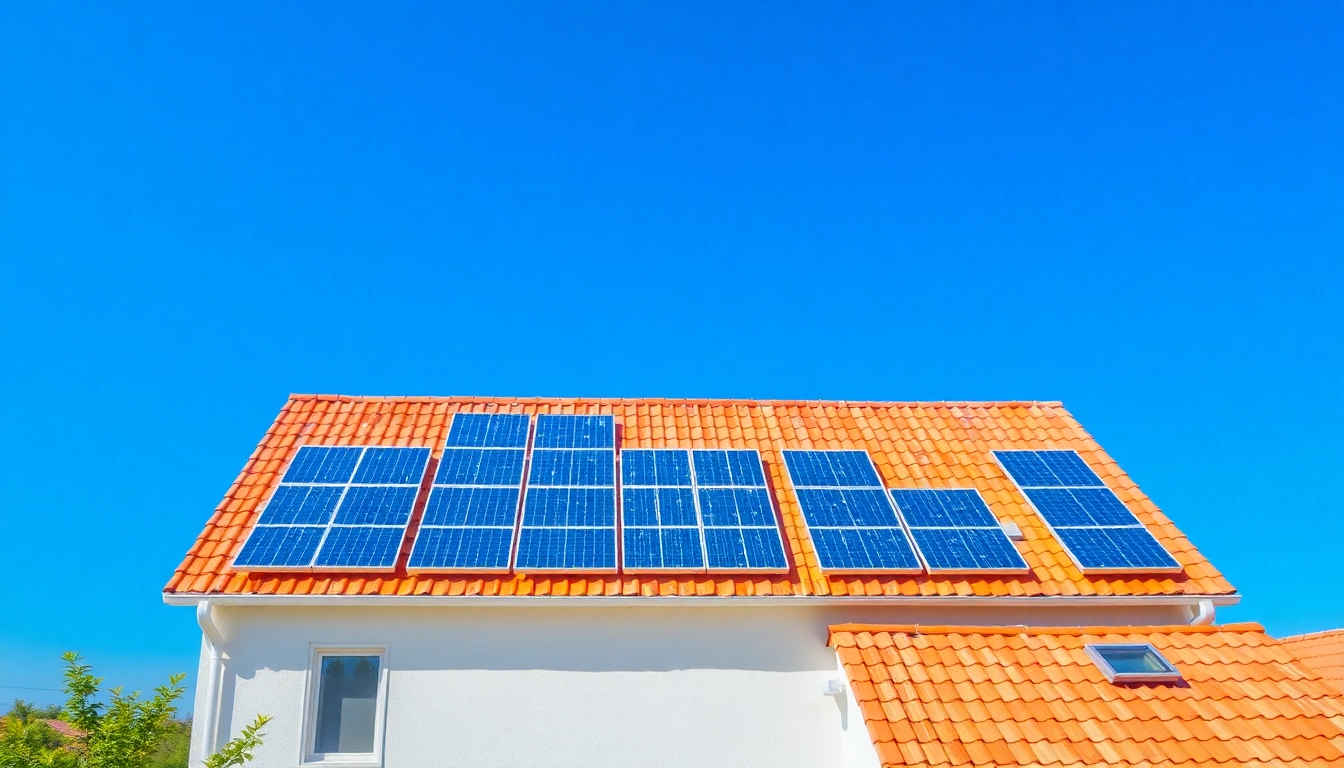Understanding Solar Panel Installation
Solar panel installation is no longer a niche market but a growing trend among homeowners and businesses looking to harness renewable energy. With the increasing awareness of environmental issues and the rising costs of traditional energy sources, the shift towards solar energy is gaining momentum. The installation process can seem daunting for many, but understanding the basics can help you navigate this journey more easily. In this guide, we will cover everything you need to know about solar panel installation, including its benefits, the types of panels available, the installation process, financing options, and maintenance tips.
What is Solar Panel Installation?
Solar panel installation refers to the process of setting up solar panels on rooftops, ground-mounted systems, or other structures to capture sunlight and convert it into usable energy. This process often involves several steps, including assessing the site, selecting the right type of solar panel, arranging local permits, and finalizing the installation. Professional installation ensures safety, efficiency, and adherence to local regulations, which is crucial given the electrical and structural components involved in effectively harnessing solar energy.
Benefits of Going Solar
There are multiple advantages to installing solar panels, which significantly enhance both your home’s value and its environmental footprint. Key benefits include:
- Cost Savings: Solar energy can drastically reduce your electricity bills. In many cases, the energy produced can cover a considerable portion of your energy needs.
- Environmental Impact: Utilizing solar energy reduces reliance on fossil fuels, thereby decreasing greenhouse gas emissions.
- Energy Independence: Managing your energy production allows protection against fluctuating energy prices and enhances energy security.
- Incentives: Many regions offer tax credits, rebates, and incentives that make solar panel installation more affordable.
Common Misconceptions about Solar Energy
Despite the growing popularity of solar energy, several misconceptions persist:
- It is too expensive: With decreased prices for solar technology and various financing options, solar has become more accessible than when it was first introduced.
- Solar panels only work in sunny regions: Solar panels can still generate electricity on cloudy days and are effective in various climates.
- Installation is too complicated: While the process involves several steps, hiring certified professionals ensures that everything is handled competently.
Choosing the Right Solar Panels
Types of Solar Panels Available
When it comes to solar panels, not all options are created equal. There are primarily three types of solar panels available for installation:
- Monocrystalline Panels: Known for their high efficiency and sleek design, these panels are made from a single crystal structure. They often take up less space but are more expensive.
- Polycrystalline Panels: Made from multiple crystal structures, these panels are less efficient than monocrystalline panels but more affordable, making them a popular choice for budget-conscious homeowners.
- Thin-Film Panels: Lightweight, flexible, and versatile, these panels perform well in low-light conditions but require more space for the same output as crystalline panels.
Factors Influencing Solar Panel Selection
Choosing the right solar panels depends on various factors, including:
- Budget and financing options
- Available roof space
- Local climate
- Energy needs and consumption patterns
Cost Considerations for Solar Panel Installation
The cost of solar panel installation can vary significantly based on several factors such as location, system size, and type of equipment used. On average, homeowners can expect to pay between $15,000 and $25,000 for a complete solar energy system before incentives. Costs can be offset through federal tax credits, state incentives, and net metering programs, making it essential to research local options thoroughly.
The Installation Process Explained
Steps for Solar Panel Installation
The solar panel installation process generally follows these steps:
- Site Assessment: A professional installer will evaluate your property to understand energy needs, roof condition, and solar exposure.
- Design and Proposal: Based on the assessment, a tailored system design is created, often along with a financial proposal.
- Permitting: Required permits are obtained before proceeding with the installation, ensuring compliance with local regulations.
- Installation: The actual installation of the panels, inverter, and other components takes place, usually completed in one to three days.
- Inspection: After installation, an inspection is conducted by local authorities to confirm safety and compliance.
- Connection to the Grid: Once approved, your system is connected to the grid, allowing you to start generating energy.
Permits and Documentation Needed
Before beginning the installation process, obtaining the necessary permits is crucial. This typically includes electrical permits for connecting the system to the grid, building permits for structural modifications, and any other local permits required. Your solar installation company can assist with this process as they are familiar with local regulations.
Preparing Your Home for Solar Panels
Preparation is essential for a smooth installation. Consider these steps:
- Ensure your roof is in good condition; repairs may be required before panel installation.
- Consider trimming branches or removing obstacles that may cast shadows on your solar panels.
- Review your homeowner’s association (HOA) regulations, if applicable, to understand any restrictions or requirements.
Financing Your Solar Installation
Understanding Solar Energy Incentives
Many states and local governments offer incentives to encourage the installation of solar energy systems. These incentives may include:
- Tax Credits: The federal solar tax credit (Investment Tax Credit) allows you to deduct a percentage of the cost of installing a solar energy system from your federal taxes.
- Rebates: Many states provide upfront rebates that significantly reduce the cost of solar installations.
- Net Metering: This allows homeowners with solar energy systems to receive credits for surplus electricity they produce, further offsetting costs.
Options for Financing Solar Panel Installation
There are several financing options available for solar panel installation:
- Cash Purchase: Simplest method; pay upfront for the entire system.
- Solar Loans: Many banks and financial institutions offer loans specifically for solar systems, which allow owners to repay over time.
- Leasing: Homeowners can lease solar panels and pay a monthly fee, often lower than their traditional utility bill.
- Power Purchase Agreements (PPAs): Similar to leasing, homeowners pay for the energy produced rather than for the panels themselves.
Evaluating Cost vs. Savings
When considering solar installation, it’s essential to evaluate long-term savings against initial costs. Factors such as local utility rates, available incentives, and financing options will influence your return on investment. On average, solar energy systems can pay for themselves in 5 to 10 years, after which the energy savings become profit.
Maintaining Your Solar Panel System
How to Monitor Solar Panel Performance
Monitoring your solar panel system’s performance ensures optimal functionality and efficiency. Most modern systems come equipped with monitoring software that allows homeowners to track energy production. Regular checks can help catch issues early, ensuring your system is performing as expected.
Common Issues and Solutions
Though solar systems are generally low-maintenance, some common issues can arise:
- Performance Degradation: Over time, solar panels may lose efficiency. Regular cleaning and maintenance can mitigate this.
- Mechanical Damage: Hail or debris can damage panels, requiring inspection and potential replacement.
- Electrical Issues: Problems in the inverter or wiring may arise. It’s best to consult a certified technician for any electrical concerns.
Long-Term Benefits of Regular Maintenance
Regular maintenance not only extends the lifespan of your solar panels but also maximizes energy production. Clean panels typically produce more energy, and identifying issues early can prevent costly repairs down the line. A maintenance schedule, ideally once or twice a year, is recommended to ensure everything is functioning properly.



